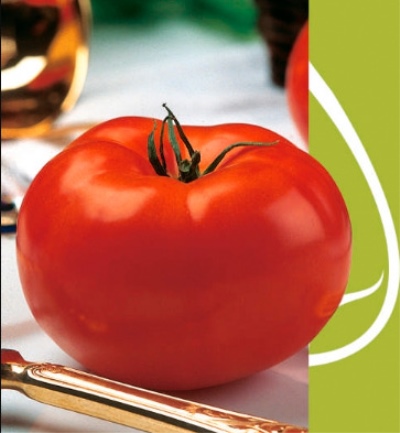
- Authors: Syngenta Seeds B.V.
- Year of approval: 2009
- Name synonyms: Wolverine F1, Wolverine F1, Volverin F1
- Category: hybrid
- Growth type: determinant
- Appointment: fresh consumption
- Ripening period: mid-early
- Ripening time, days: 90-100
- Growing conditions: for open ground
- Transportability: high
The Volverin tomato has been grown for quite some time. However, not all gardeners know him yet. And this annoying gap is quite easy to fix - it is enough to familiarize yourself with objective information.
Breeding history
Volverin was approved for use in 2009. This variety is one of the best results in Dutch breeding. Foreign developers managed to achieve a high quality culture and to a large extent optimize it in comparison with their predecessors. The authorship belongs to the staff of the company Syngenta Seeds B. V.
Description of the variety
The plant has 3 official synonyms - Wolverin F1, Wolverine F1, Volverin F1. This is a solid hybrid, determinant plant. Volverin's bushes are undersized, but at the same time quite powerful. They are characterized by a large number of leaves. The green foliage is medium in size.
The main qualities of the fruit
Volverin berries, which have not yet ripened, have a light green color. When ripe, they will take on a rich red hue. There is no green spot, and many people like this property very much. The size of 1 tomato is quite large, its weight ranges from 230 to 250 g. The fruit develops on an intermediate inflorescence, its stalk has no articulation.
Other information about Volverine fruits:
rounded-flattened configuration;
the proportion of dry matter is from 6.3 to 7.4%;
a decent level of keeping quality.
Taste characteristics
The pulp of such tomatoes is quite dense. The reviews note the balance of taste. The crop is consumed both fresh and after processing. The share of marketable fruits ranges from 92 to 96%.
Ripening and fruiting
This is a classic mid-early variety. The fruits will ripen in 90-100 days. As usual, the countdown is carried out from the formation of early bush greenery. After the appearance of the first berries, they will form for a rather long time.
Yield
Volverin tomato is grown mainly on large plantations. In this variant, the collection is from 289 to 508 centners per 1 ha. The exact figure is highly dependent on meteorological conditions and the perfection of agricultural technology. Therefore, such a culture is classified as a high-yielding group. Private gardeners will also be able to achieve a good result only with meticulously organized care.
The timing of planting seedlings and planting in the ground
Transplanting seedlings into open ground can be done on average 63 days after sowing seeds in a container. When determining the date of disembarkation, you need to be guided at the moment when the frost is guaranteed to end.

Growing tomato seedlings is an extremely important process, because it largely depends on whether the gardener will be able to harvest at all. All aspects must be taken into account, from seedbed preparation to planting in the ground.
Landing scheme
Usually, at least 15,000 bushes are planted on 1 hectare of tomato plantation. The maximum permissible saturation is 20,000 bushes in the same area. There is no information about the planting scheme in the garden or personal farm in the sources. There is only information that for 1 sq. m, you can place no more than 4 plants. By planting 3 bushes, it will be possible to provide optimal care.

Growing and care
Tomatoes like these are in urgent need of well-drained soil. For them, you need to provide at least 6 hours of sunshine daily. This point must be taken into account when choosing a landing site. If there is not enough natural light, additional lighting with lamps is needed. It is very beneficial to add large amounts of organic matter to the soil.
Wolverin is recommended to be watered with warm water. For feeding use the drug "Krepysh". It is recommended to harden seedlings. All stones and other foreign inclusions must be removed from the ground. Soil clods also need to be broken up.




A plant needs different micronutrients at each stage of growth. All fertilizers can be divided into two groups: mineral and organic. Folk remedies are often used: iodine, yeast, bird droppings, eggshells.
It is important to observe the rate and period of feeding. This also applies to folk remedies and organic fertilizers.
Disease and pest resistance
The culture has no specific pests. She steadfastly transfers contacts with the causative agent of verticillus and the tobacco mosaic virus. Fusarium wilting is also unlikely. Fruit cracking is completely excluded. Anthracnose and powdery mildew are perfectly safe for Volverin tomatoes.


Resistant to adverse weather conditions
The variety endures the summer heat. He is not capable of resisting even a slight drop in temperature, not to mention frost.
Growing regions
Tomato Volverin is preferably cultivated in the North Caucasus. In areas with a more severe climate, it is hardly possible to grow it. A certain exception, probably, can be a greenhouse culture with the strictest adherence to agricultural standards.

























































































